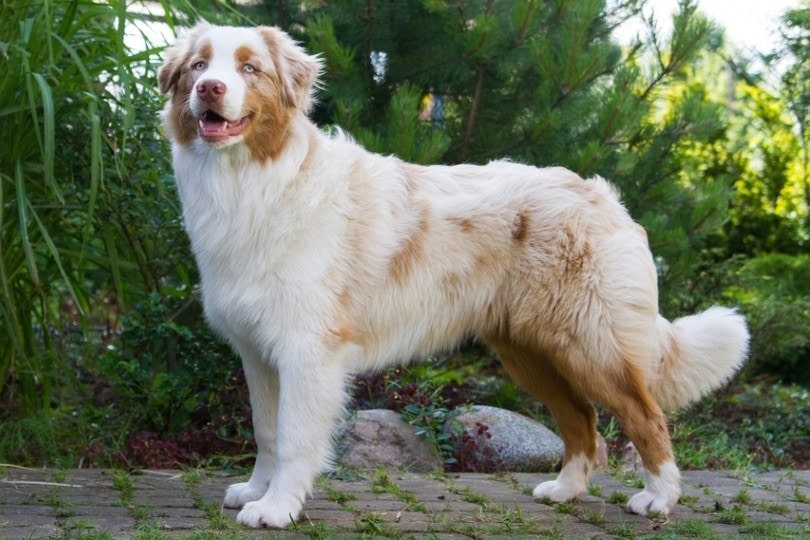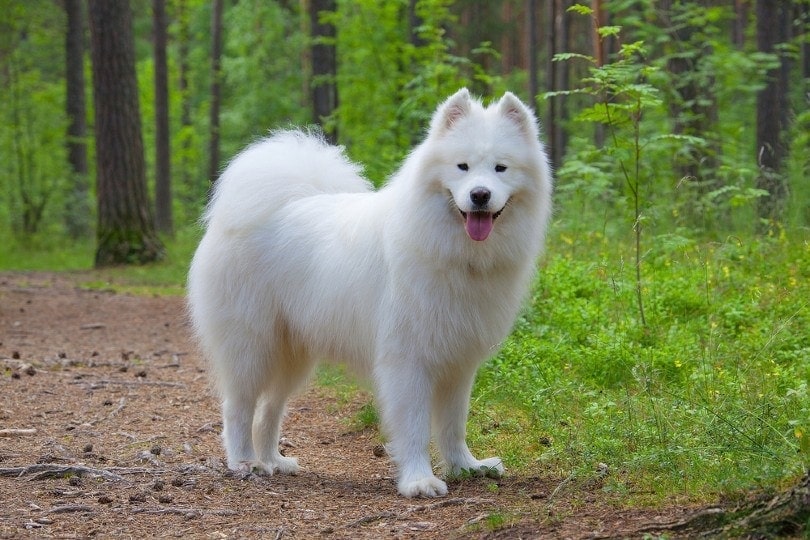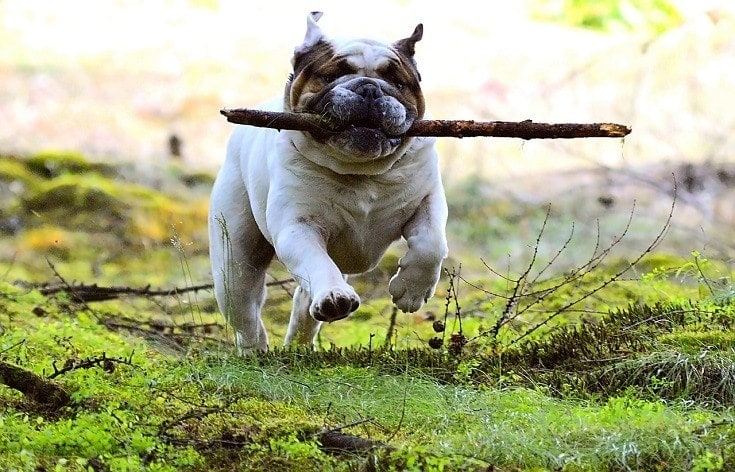How to Stop a Dog from Licking Their Paws: 11 Vet-Approved Home Remedies

Updated on
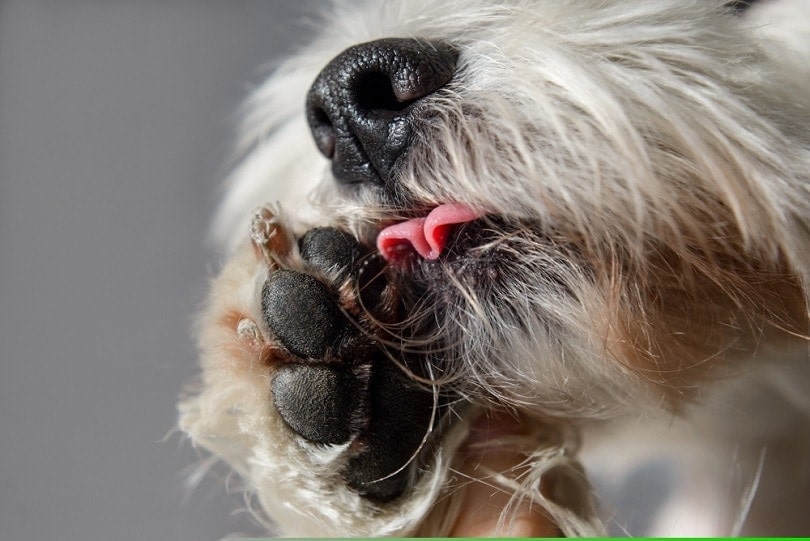
All dogs lick their paws every once in a while. It usually doesn’t turn into a problem.
However, some dogs can lick their paws so much that they strip the hair and cause sores. Often, these sores can get infected and itchy, which causes your dog to lick them more intensely. In this way, the cycle continues until your pooch’s paws are severely infected.
Your vet may be able to help your pooch, especially if their situation is quite severe. Otherwise, though, you may want to consider trying a few home remedies first.
Luckily, many different home remedies can ease your pooch’s itchiness. Most of these are extremely easy to do and only take a few moments.
The 11 Home Remedies to Stop a Dog From Licking Their Paws
1. Switch Their Food
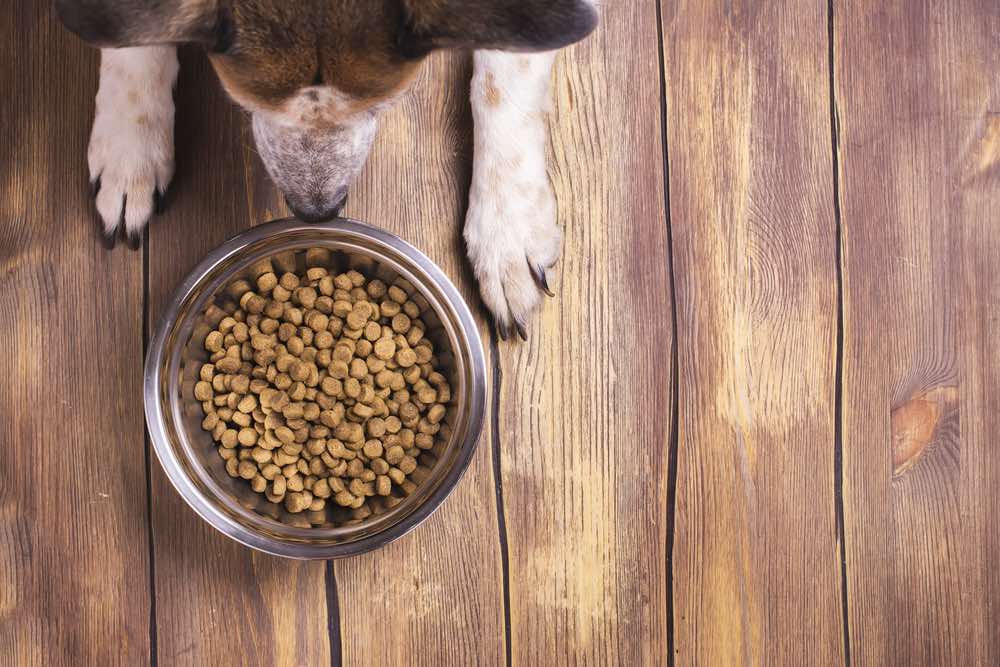
If your dog is licking their paws suddenly, but you don’t notice anything apparently wrong with them, then the odds are that they’re allergic to their food. When dogs have a food allergy, they often get itchy—instead of the intestinal problems you might expect.
Food allergies are even more likely to be the case if your dog has been eating the same food for an extended period. Dog allergies develop over time. If your dog has been eating the same chicken kibble for years, the odds are that they developed an allergy to chicken protein.
Therefore, if your dog starts scratching, switching their food to a different recipe may be the best option.
In these cases, you’ll want to switch their food to a different recipe that includes different ingredients. Dogs only become allergic to the protein in their food. So, you only have to worry about switching protein sources. For example, if your dog is eating a food that contains chicken, switch them to one that includes beef.
Be sure to read the ingredient list extra carefully. Just because it doesn’t mention chicken in the recipe name doesn’t mean that the food doesn’t contain any chicken. Many dog foods will use chicken as a cheaper protein to bulk up more expensive protein sources.
It is important to remember that dogs can become allergic to the protein in grains and dairy products as well. Check your dog’s current food for these familiar allergen sources. If it includes them, be sure their new food does not.
You may want to consider speaking with your vet, who may be able to give you specific food recommendations. However, in many cases, you may be able to figure out a new, suitable food without extra assistance. Just read the ingredient lists!
If you need to speak with a vet right now but can’t get to one, head over to JustAnswer. It’s an online service where you can talk to a vet in real time and get the personalized advice you need for your pet — all at an affordable price!
2. Tend to Your Pet’s Wounds
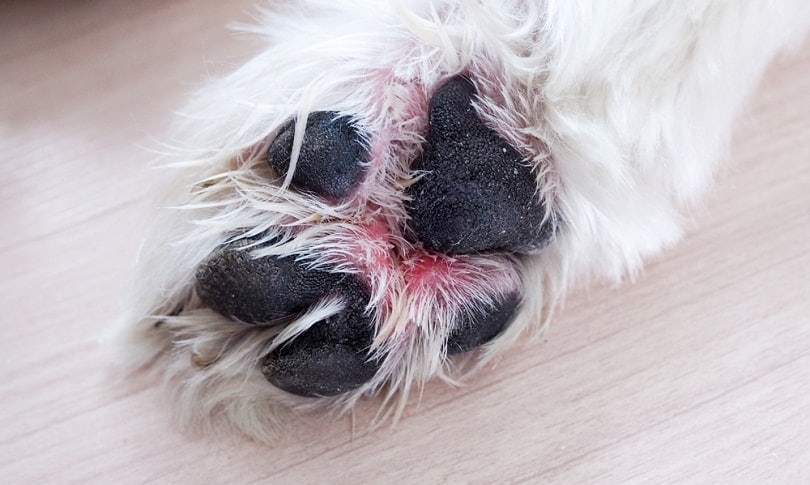
Paw licking can turn into a vicious cycle. Your dog starts chewing at their paws for one reason or another. Then, they develop sores and an infection. This infection makes their paws itchy, which causes them to lick even more.
Because of this cycle, your dog may continue licking even when other treatments have addressed the underlying problem. To stop the behavior altogether, you’ll need to treat the infection as well.
If your dog’s wounds are already infected, you’ll need to visit your vet for this. Infected wounds are not something you want to mess with. They can get very serious. However, if your dog’s wounds are new and don’t show any signs of infection, some care at home can prevent an infection from setting up.
Wash your pet’s paws in warm water with mild soap. Baby’s soap works well for this since it is about as gentle as you can get. If you’re putting some sort of booties on your dog’s feet, you can put some antibiotic ointment on their wounds as well. Just make sure the booties stay intact so they don’t lick the ointment off.
3. Soak Your Pet’s Paws in Apple Cider Vinegar
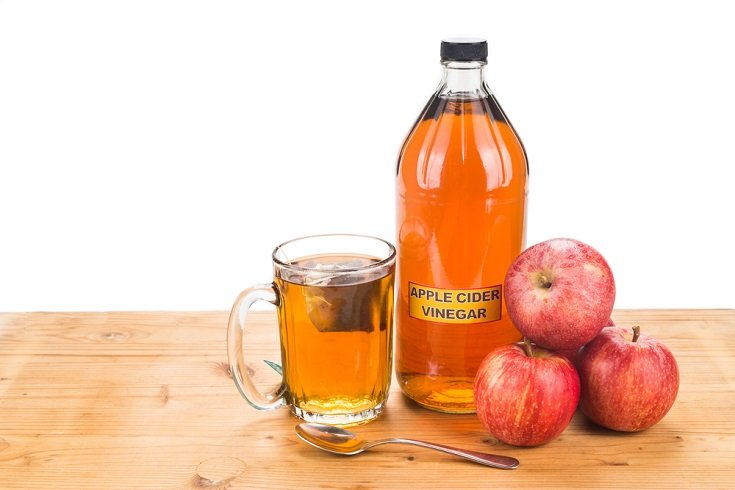
Apple Cider Vinegar has some anti-fungal properties. If your dog is licking their paws because of a fungal infection, apple cider vinegar can help clear up the problem. Vinegar is diluted acetic acid, making it effective at killing fungi without any sort of harmful effect. To do this treatment effectively, just dilute the vinegar in the water at a 1:2 ratio. That is two cups of water for every cup of vinegar. Then, soak your pet’s feet in it for about five minutes.
You’ll need to do this two times a day for it to work correctly. This method is best for slight fungal infections, not serious ones. If it doesn’t work, you should consider speaking to your veterinarian.
Of course, this method is mainly helpful if a fungal infection causes your dog’s licking. If it isn’t working, you’ll need to try a different method.
4. Try Using Baking Soda
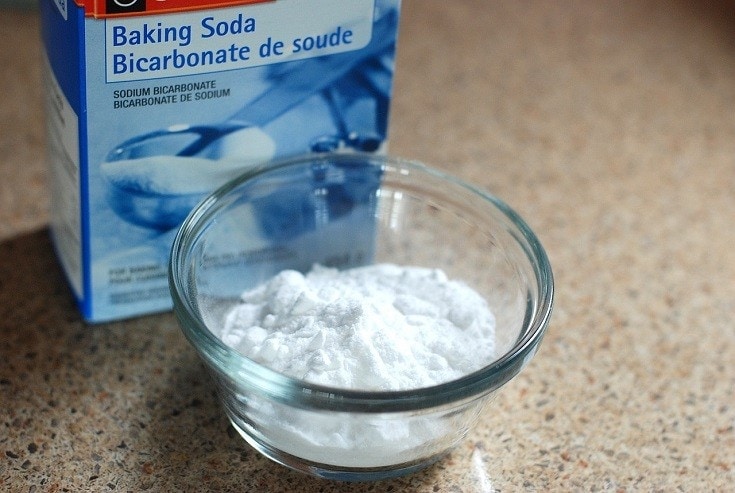
Baking soda is a safe compound that has anti-inflammatory properties. It is recommended for a variety of canine conditions. Baking soda is particularly useful for at-home treatments because it is practically harmless. To use baking soda effectively, make a paste out of it with water, and leave it on your pet’s paws for an hour or so. Booties are going to be necessary to keep your pooch from licking it off.
This method will not treat your dog’s underlying condition, so it will not stop the itching altogether. However, it may reduce the irritation over a short period, allowing other treatments to kick in. It works well when combined with booties, which prevent your pooch from licking their paws at all.
5. Add Extra Vitamin E to Your Pet’s Diet
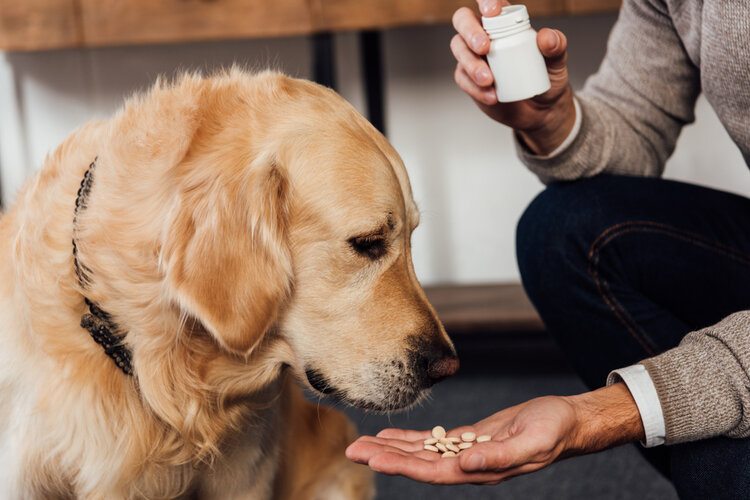
Vitamin E is necessary for your dog’s skin health. If the skin on their paws is irritated, they may not be getting enough vitamin E in their diet. Even if a vitamin E deficiency didn’t cause your dog’s skin problem, boosting their vitamin E intake might help ease some of the irritation.
The easiest way to boost their vitamin E intake is to switch to dog food that contains a suitable amount. They also make vitamin E supplements you may want to try. Remember, too much vitamin E can be a bad thing. Always follow the directions on the supplements you purchase and speak to your vet if you have any questions.
6. Add Fish Oil to Your Pet’s Diet

Fish oil is a commonly used supplement to improve a dog’s skin and coat. Preferably, your dog should be getting everything they need from their current pet food. However, this isn’t always the case.
If your dog has skin problems, they may need extra fish oil in their diet. Supplements are available. Alternatively, you could simply switch their food to a different recipe that includes added fish oil. Not all dog foods have fish oil included, but more and more are starting to add it as its benefits become well-known. Fish-flavored dog foods are more likely to include some sort of fish oil supplements.
- Related Read: 10 Best Fish Oils for Dogs – Reviews & Top Picks
7. Give Honey a Shot

The antibacterial properties of honey are very well-known. It’s high in sugar, contains hydrogen peroxide, and has a low pH—all factors that prevent the growth of bacteria. If your canine has any sort of bacteria on their paws, applying honey to the area may help. Honey is non-toxic as well, making it another very safe option.
Of course, many dogs will happily lick honey off of their paws. Because of this, you may want to consider using booties or some sort of dressing over the honey. Otherwise, your pooch will likely lick all the honey off before it has a chance to be of much help.
8. Consider Purchasing a Calming Shampoo
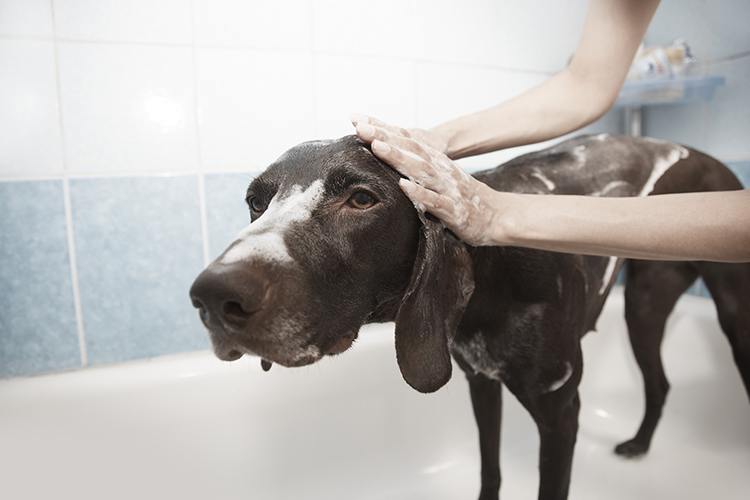
There are many different dog shampoos on the market that are designed to calm itchiness. Many of these shampoos have things like oatmeal, which can help alleviate your dog’s problem. However, you don’t want to bathe your dog too often. Bathing your pooch too much can lead to dry skin, which can cause even more irritation—only bathe your dog when they’re dirty or start to get smelly.
Some breeds need more bathing than others. Be sure to look up specific information about your dog’s breed to figure out exactly how much they should be taking a bath. When in doubt, it is almost always better to bathe your dog less instead of more.
Keeping your pet's skin and coat clean and healthy is very important, but finding a great shampoo can be harder than the actual grooming! We love our Hepper Pet Shampoos because they makes grooming so much easier. These pH-balanced formulas are made with natural ingredients like oatmeal, cucumber, and aloe. They are free of phthalates, sulfates, and soaps and very gentle on your pet's skin. Now you just need to decide which formula is best for your fur baby! Here’s a quick guide to help you choose the right option for your pet’s next bath!
Hepper Colloidal Oatmeal Pet Shampoo
Hepper Waterless No Rinse Pet Shampoo
Natural cucumber & aloe scent
Safe for cats & dogs
Rinsing required
Free of harsh chemicals & nasty ingredients
Lathers easily
9. Treat for Fleas and Ticks
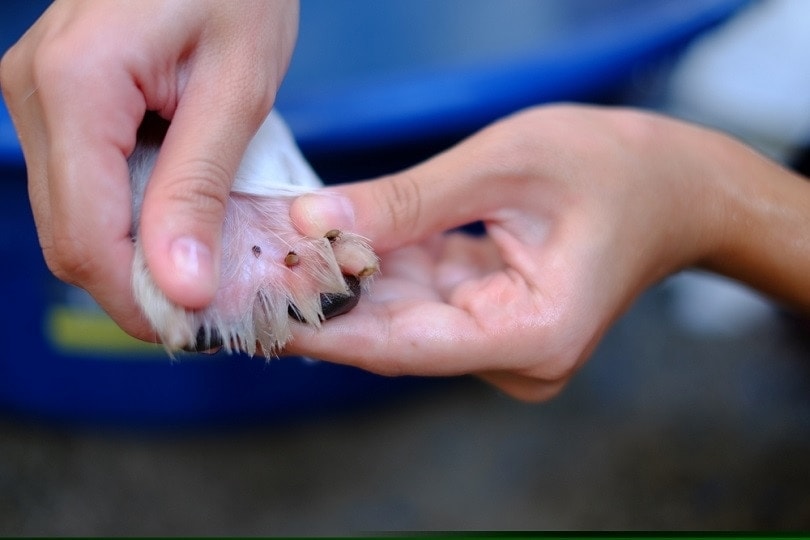
In most cases, fleas and ticks are pretty easy to spot on dogs. They typically gather near your dog’s stomach when they have an infestation. To check, just go to rub your dog’s belly and keep your eyes open for fleas or ticks.
However, it is not always this easy.
Some dogs are extremely allergic to fleas. They may just have one or two fleas, making it difficult for you to spot them in their coat. However, these fleas may cause significant skin irritation. Treat your dog for fleas, just in case. The last thing you want to do is try everything else on this list only to find out that your dog had fleas all along!
10. Use Protective Booties
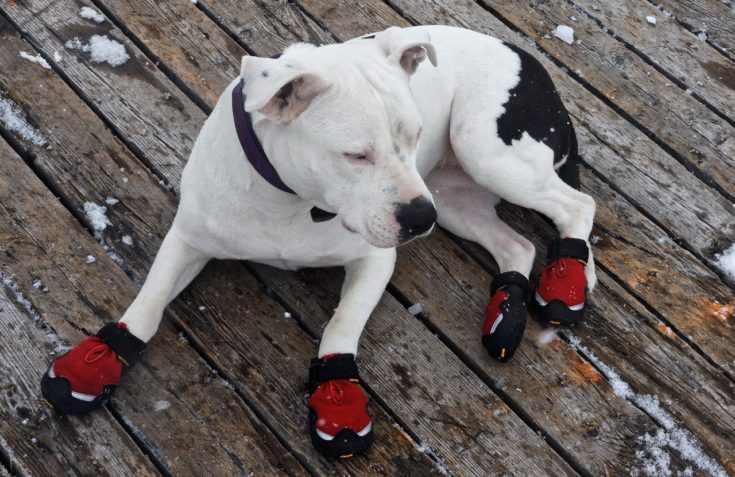
Even if you’ve figured out why your dog is chewing, using protective booties can be a suitable choice. These booties prevent your dog from chewing and licking their paws, which prevents further damage. It usually takes a bit for dog food changes and flea treatments to kick in. These protective pieces of clothing can prevent further damage in the meantime.
However, that does not mean you can just slap these booties on your dog and forget about it. You still need to treat the underlying condition causing their itchiness. Fleas, food allergies, and bacterial infections can all cause problems beyond itchiness. Getting these underlying conditions treated is required for your pet to stay healthy.
Still, these booties can be helpful to prevent further licking while your dog is undergoing treatment.
11. Consider Anxiety Treatments
Rarely, anxiety can cause paw chewing and similar behaviors. To honestly figure out whether or not your pooch has anxiety, you’ll need to plan a visit to your vet. However, keeping an eye out for other anxiety symptoms can give you a clue as well. If you recognize any of these symptoms, let your vet know about them too.
Symptoms of anxiety in dogs include things like barking or howling when you aren’t home, panting, pacing, running around, digging, destructive behaviors, self-harm (like licking their paws), and aggression. Luckily, there are many at-home treatment options for anxiety. By treating your dog’s underlying anxiety, you should stop their insistent licking as well.
Many over-the-counter remedies can calm your dog’s anxiety. Be sure to get something particularly formulated for dogs to ensure it is safe. Music or even just leaving the TV on can be calming to some dogs as well. Certain weighted pet clothes may also be helpful. You should try multiple different strategies to see which one works best for your pooch. If you can, trying all of these treatments at once is likely to produce the best results.
Of course, none of these treatments will work if your dog isn’t actually anxious. If you’ve tried other methods and they haven’t worked, treating for anxiety may be your next best option.
See Also:
- 8 Best Whitefish Dog Foods – Vet Approved Reviews & Top Picks
- What Are Tocopherols in Dog Food? Is It Safe?
Featured Image Credit: Julia Serdiuk, Shutterstock




